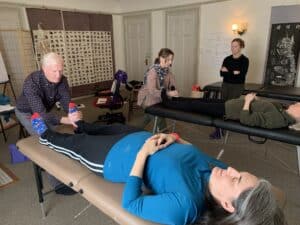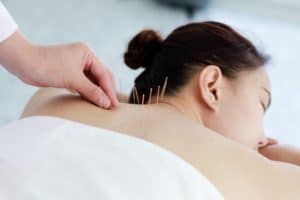Acupuncture has a powerful sister that gets much less attention in the West, called moxibustion. Ancient and equally potent, acupuncture and moxibustion go hand-in-hand in east Asian traditional healing. The Chinese word that we translate as “acupuncture”, zhenjiu 针灸, actually refers to both acupuncture and moxibustion together (literally, it means “needle moxa”). Acupuncture and moxibustion are two fundamental parts of one healing method, yet many acupuncturists in the USA rarely or never use moxibustion. In Five Element acupuncture, this ancient technique continues to be an essential part of treatment. What is moxibustion and why is it used?
Techniques of Moxibustion
Moxibustion is the burning of an herb, mugwort (Artemisia Chinensis), over or near points on the acupuncture meridians. The prepared form of mugwort is called “moxa.” The burning of moxa creates heat and also releases healing compounds from the plant. Moxibustion stimulates the acupuncture meridians, as the heat and plant compounds are absorbed into the body.
There are several different traditional methods of application, which fall into general two categories – indirect and direct moxibustion. The most widely used methods are:
- A roll of moxa is lit and held indirectly above the skin to create a warming effect.
- A cone of moxa is placed on top of an insulating material, usually either salt or sliced ginger, over the skin. This allows the heat and plant compounds to be gently absorbed into the body.
- A cone of moxa is placed directly onto the skin over an acupuncture point, and allowed to burn until warmth is gently felt. (It does not cause burning or damage to the skin.)
Moxa in Five Element Acupuncture
Direct moxibustion is used frequently in Five Element acupuncture, and indirect moxibustion is used occasionally. It is generally used before needling an acupuncture point. Sometimes, the moxibustion is used on its own without needling. To see how moxibustion is used in Five Element acupuncture, watch this video.
Moxibustion is primarily used as a “tonification” technique. That means it helps to boost the vital energy of the body (qi 氣), and it augments the effects of needling.
What Can Moxibustion Treat?
Historically, moxibustion has been used to treat a very wide range of complex illnesses, especially the common problems of old age. Traditional applications include osteoarthritis, fatigue, diarrhea, constipation, cognitive impairment and urinary problems, to name a few. Another traditional use of moxa is to treat malposition of the fetus during pregnancy.
Modern research on moxibustion is scanty but promising. One recent review of 47 studies covering 36 diseases found encouraging results for many conditions, notably ulcerative colitis, herpes zoster, Parkinson’s disease, and asthma. Randomized controlled studies in laboratory animals have found that moxibustion can help prevent cognitive impairment and dementia.
Clearly, there is much more to be learned about this gentle and powerful healing method, which tends to be overlooked and under-used in the USA.
Inner Works Acupuncture is a Five Element acupuncture clinic in northwest Portland. We use moxibustion along with acupuncture treatment. To learn more or schedule an appointment, call 503-227-2127.




